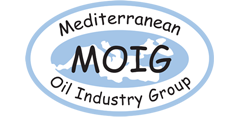
13 January 2025, the MOIG Director participated to webinar titled summary of the surveillance activities of aquatic debris animated by Silvère ANDRE, Engineer at the Center of Documentation, Research and Experimentation on Accidental Water Pollution (Cedre), technical partner, based in Brest-France.
The main objective of this webinar was to make a review on the surveillance activities of the debris grounded on the shoreline and resulting from river basins ; conducted by Cedre at national level ; which is based on the implementation of three surveillance networking coordinated by Cedre.
Silvère ANDRE started by introducing Cedre as an International expert organization on accidental water pollution in the fields of research, surveillance of aquatic debris, analysis and tests, training, information and emergency planning.
Silvère ANDRE then presented the history of the surveillance starting with the first work conducted in 1982, highlighting that the first produced report included the approach of the pollution along the French coastline by macroawstes.
He explained that an inventory and an assessment method of coastline small pollution (Case of macrowastes) was conducted by Cedre in 1997. This action aimed to improve the situation through the establishment of an observation network considered as a pilot sites ; to ensure the follow-up of the coastline pollution, which would allow to evaluate the preventive measures.
Silvère ANDRE explained that the LITTER project was conducted between 2000-2006 within the framework of OSPAR convention grouping the member countries : Germany, France, Island, Netherland, UK and Sweden. He noted that this project aimed to develop and validate a field methodhology to measure the pollution from wastes in the coastlines. He noted that a rich and common database was created by all member countries in early 2000s.
Silvère ANDRE stated that France participated to this project conducted by Cedre ; on 11 beaches of the Atlantic-Channel ; involving the ESTRAN and Aquacaux associations that constitutes the first network of local operators. He underlined that ; in 2009, a working group of 25 organizations have issued recommendations for a coordinated plan to reduce the floating macrowastes stranded in the rivers, ports, shoreline and sea.
Silvère ANDRE noted that an observation network of macrowastes was initiated by Cedre on the metropolitan French coastline in 2010 ; in which the OSPAR protocol was applied on 06 monitoring sites. He explained that the monitoring of sites was performed by volunteers. He emphasized that an initial assessment of the ecological status of the marin environment was conducted in 2012. This assessement consisted of defining the good environmental status and objectives in terms of reduction of the marin debris in different areas such as: Beaches, surface and seabed etc…
Silvère ANDRE said that the national surveillance network of macrowastes in the shoreline has been launched between 2016 and 2018. He explained that this network was coordinated by Cedre and 15 local operators (Associations, Marin natural parks and communities) were involved in this network.
Silvère ANDRE noted that there was the development of the surveillance protocol of microplastics in the beaches ; in parallel ; between 2016 and 2021. He explained that the first work consisted of taking samples of sediments and measuring microplastics. He underlined that the second national surveillance network of macrowastes from river basins was launched in 2020. He noted that the third national surveillance network of meso and big microplastics was launched in 2021; covering the wastes having sizes between 1 mm and 2.5 cm.
Silvère ANDRE stated that a feasibility study for a surveillance network of macrowastes in the shoreline in overseas communities was launched in 2023. He noted that this study allowed mapping of wastes in the shoreline of the overseas communities, issue recommendations for continuing the surveillance and the implementation of the strategy. In addition, he explained that the three surveillance networks were operational in 2024 and have reached the objectives set in terms of site numbers and spatial distribution.
Regarding the fonctioning of the three surveillance networks, Silvère ANDRE stated that Cedre coordinates the network, identifies the surveillance of sites, trains operators, recovers and controls the data, analyses pollution and forwards the results. For the local operators, he explained that their roles are to identify the surveillance of sites, perform the monitoring by applying the protocol and note information on sites.
For conclusion, Silvère ANDRE underlined that Cedre develops and implements networks of surveillance since 2010 and the surveillance strategy proved to be relevant and consistent since 2015. In addition, he stated that the implementation of the surveillance networks will continue in 2025.
